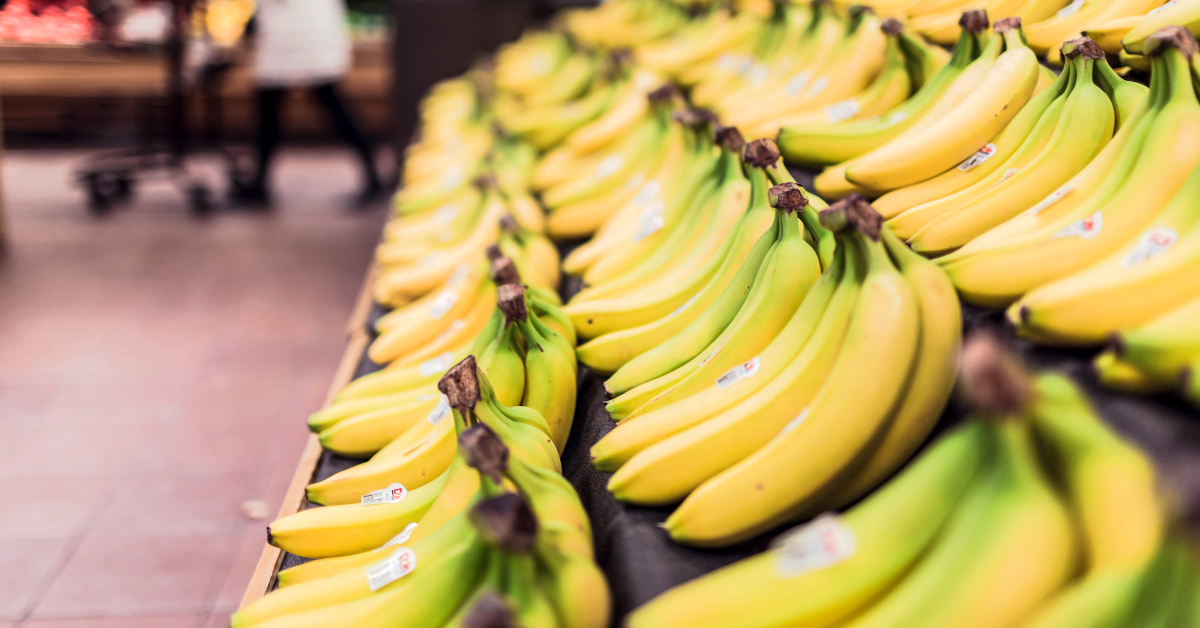Diabetes Problem Foods: People with diabetes often hear opinions about what foods are okay to eat or not. But what’s the truth? Here is some perspective about bananas from Timika Chambers, CDE.
Diabetes Problem Foods, Pt. 1
Are You Going Bananas Over Bananas?
Sometimes we can get caught up in looks, smells, and other people’s opinions about food instead of using our judgment based on facts about the food and its effect on our body, especially when it comes to potential blood sugar spikes. We may not consider our current health condition or diagnosis and how that food can nurture our bodies by providing key nutrients such as fiber, minerals, and vitamins. Let’s take bananas, for example.
Many people with diabetes (PWD) may not eat bananas because they have heard or read that bananas are high in sugar; therefore, many PWD avoid including bananas in any of their meals or snacks because they fear that eating a banana will raise blood sugar and cause high blood sugar levels (hyperglycemia). While one medium-size banana (7-7/8) is certainly no low-carb fruit and does contain approximately 27 grams of carbohydrates, bananas also contain potassium and fiber (about 3 grams of fiber out of those 27 grams of carbs), which are key nutrients generally lacking in the standard American diet. Bananas have been around for thousands of years, and the keys to maximizing the fuel from bananas are understanding this fruit and learning how we can incorporate it into a healthy meal plan.
History of Bananas
Bananas are known to be the first cultivated fruit, around 8000-5000 B.C in Southeast Asia and South Pacific, and people all over the world eat over 100 billion bananas annually. Although bananas are known for their elongated shape, they come in approximately 1000 different varieties of colors, shapes, and sizes. Some cultures see fruits, including bananas, as a way of cleansing the mind or increasing wisdom. In Ayurvedic medicine, fruits are valuable because of their ability to cleanse the body from toxins. In India, bananas are known to be “Fruit of the Wise Men”.
Banana Nutritional Information
While bananas are not a significant source of Vitamin A or iron, bananas are low in calories (105), sodium (1mg), and cholesterol (0). One medium banana (7-8 inches long) contains approximately 422 milligrams (mg) of potassium. Potassium has many health benefits and is one of the key nutrients that our body needs to regulate fluid balance, muscle contraction, and nerve transmission. Potassium may also prevent heart disease, kidney disease, osteoporosis, strokes, and water retention, which may help avoid or delay these potential complications of diabetes. According to the World Health Organization, increasing potassium may help decrease the risk of high blood pressure and cardiovascular disease. Bananas have a low glycemic index (low GI), around 51 on the scale. On this note, it's worth mentioning that ripeness plays a role in the bananas glycemic load. Ripe bananas have less resistant starch and a higher amount of sugar than their green banana counterparts, which are generally unripe bananas, meaning, fully ripe bananas have a higher GI.
Because too much potassium can cause other health problems, be sure to discuss the consumption of potassium-rich foods with your healthcare provider.
Fiber is something both men and women do not take enough of, and one medium banana provides 3.1g of fiber. Fiber helps to slow the digestion of carbohydrates and plays a significant role in maintaining a normal gut environment, metabolism, and decreasing cholesterol.
Banana FAQ
Can I eat any size banana?
One serving size/portion size of a banana is a small or medium-sized banana.
Can I eat as many as I want since bananas contain fructose instead of sucrose or table sugar?
Fructose is still sugar. Balance and moderation are the keys for diabetes management and blood sugar control.
Are bananas a part of the Diabetic diet?
Many organizations are going away from the term “diabetic diet” or "diabetes diet." In May 2019, the American Diabetes Association (ADA) released its new guidelines in its Nutrition Consensus Report, which advocates for an individualized diet plan for those with type 1 or type 2 diabetes.
Just like any other food or whole fruit you want to try, include a small banana in your meal plan and check your post-prandial blood glucose (preferably two hours after you start eating) to see how the banana affected your blood sugar. If you use rapid-acting insulin, be sure to count the carbs and dose appropriately. According to the ADA, a postprandial blood sugar of 180 mg/dL or less is the goal. I usually encourage two-hour postprandial blood sugars to be closer to 140 mg/dL.
Tip: Some people may prefer unripened bananas over fully-ripe bananas because they are easier to digest. Keep in mind that as the banana ripens, the ripe banana contains more free sugar.
What is the best way to include bananas in my meal plan?
Let healthy eating tap into your creativity. Add bananas to breakfast by including them in smoothies instead of using sugar. You can add sliced bananas to your cold and hot cereal. Make a banana cream-based sauce for your pancakes, muffins or toast. Or, try making banana pancakes.
For lunch or dinner, you can add bananas to kabobs, salads, and soups, or make a banana parfait.
For desserts, try making banana bread, banana ice cream, or a mouse. Banana ice cream is simple to make because you are primarily using bananas. You can also add your favorite toppings, such as almonds, walnuts, and cacao powder for chocolate banana ice cream.
To keep carbohydrates and fats low, try substituting or finding recipes that use alternative sweeteners (Stevia, Swerve) and flours (almond, oat, etc.), and low-fat ingredients (milk, greek yogurt, etc.).
Here are a few websites to help you on your journey with including bananas in your meal plan and snacks.






